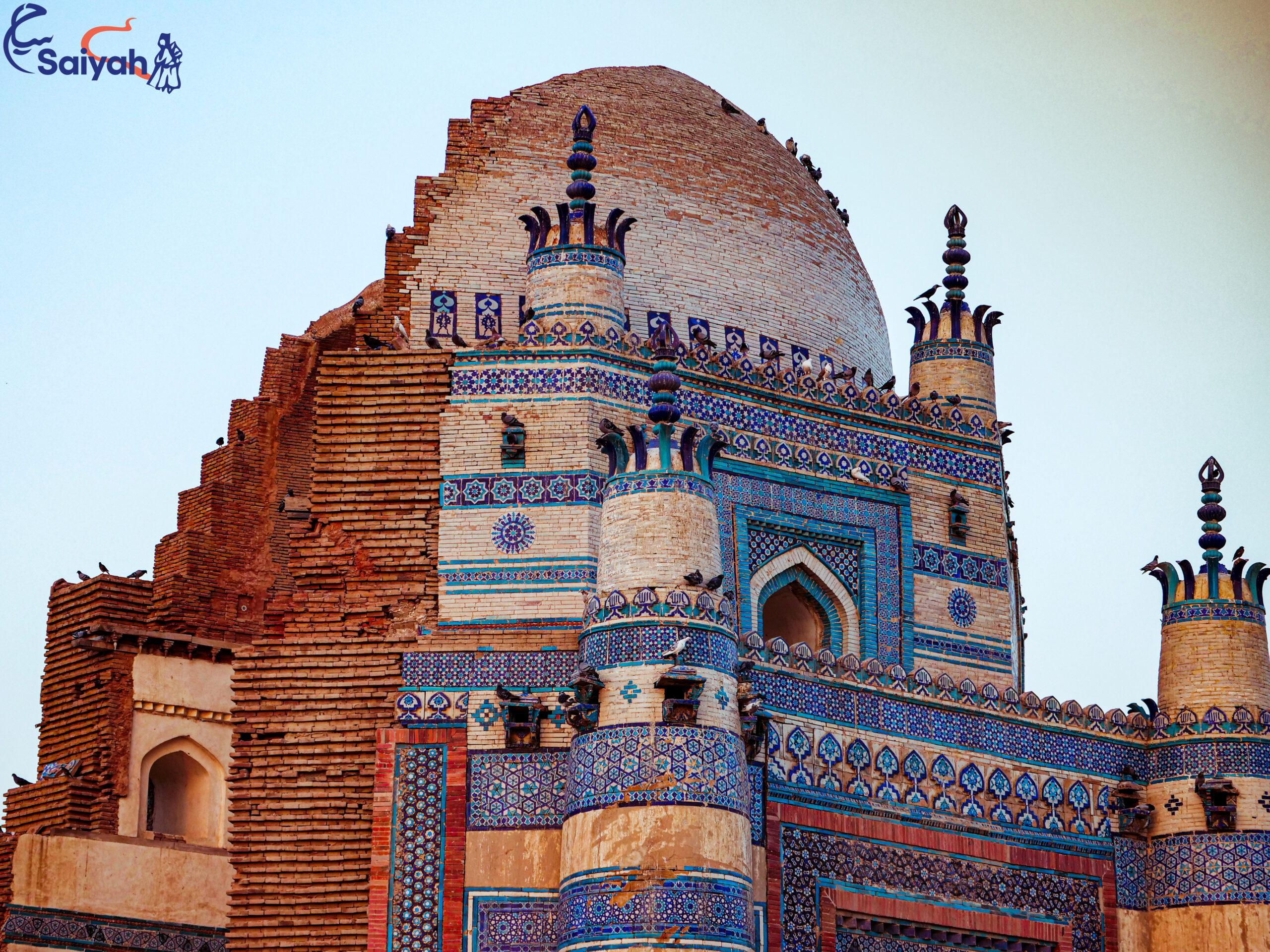Uch Sharif’s history is rich with complexity and cultural blending. The city may trace its roots back to 325 BCE, possibly founded by Alexander the Great as Alexandria on the Indus. Natives from the Greek region of Thrace were said to have settled in Uch, at the confluence of the Acesines river with the Indus. Over the centuries, Uch became a focal point of historical events. In 712 CE, Muhammad bin Qasim conquered the city, leaving an indelible mark on its narrative. As we navigate the historical layers of Uch, one architectural marvel emerges—the Bibi Jaiwindi Tomb
Dating back to 15th century, the foundations of Bibi Jawindi’s tomb were meticulously laid, marking the commencement of a saga that has withstood the trials of time. It honors Bibi Jawindi, the great-granddaughter of Jahaniyan Jahangasht. Despite enduring the elements and succumbing to a fateful flood in 1817, which claimed half of its structure, this architectural marvel stands as a testament to resilience. Today, we stand before a structure that serves as a silent witness to the stories of a bygone era.
Envision glazed bricks meticulously arranged on an octagonal base, adorned with turrets gracing each of its eight corners (octagonal). The tomb stands tall, boasting three tiers on the outside, with the uppermost tier cradling a majestic dome. Inside, thick angled walls create a circular space that unfolds over two stories. What truly distinguishes this tomb is Islamic scriptures, intricately carved timber, and a mosaic of bright blue and glazed white tiles embellish both interior and exterior. The base finds support in eight tapering turrets, strategically placed in each corner. The layout of the tomb is quite similar to that of the mausoleum of Shah Rukn-e-Alam in Multan. Bibi Jawindi’s tomb remains an enchanting sight. The compound encircling the shrine retains its original desert-like ambiance, adorned with cemented graves that echo the tales of the past. As you traverse through, an undeniable connection emerges with the countless souls who have etched their mark on this sacred ground.
In 2004, the Department of Archaeology and Museums Pakistan bestowed global significance upon Bibi Jawindi’s tomb. The tomb alongside four other monuments, were submitted to World heritage sites. However, it is still on the tentative list.
This monument, weathered by time yet standing tall, prompts us to appreciate not only its architectural brilliance but also the enduring resilience it embodies. Bibi Jawindi’s tomb transcends being a mere structure; it stands as a living testament to the enduring spirit of art, history, and the human touch that resonates across generations.
Written by: Sarosh Hadi





